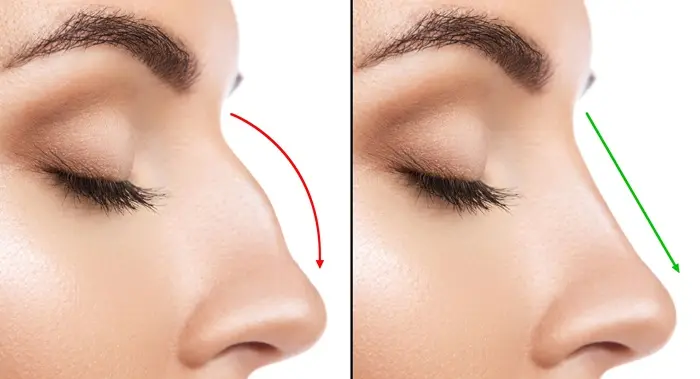Rhinoplasty fillers, also known as non-surgical rhinoplasty or liquid nose jobs, have become a popular option for those seeking to enhance the appearance of their nose without undergoing invasive surgery. These fillers can address minor imperfections, provide a more symmetrical look, and enhance the overall aesthetics of the nose. This article will explore the five best rhinoplasty fillers, detailing their composition, benefits, potential risks, and ideal candidates.
Understanding Rhinoplasty Fillers
What Are Rhinoplasty Fillers?
Rhinoplasty fillers are injectable substances used to alter the shape of the nose. They can correct minor bumps, asymmetry, or other aesthetic concerns without the need for surgery. The results are typically temporary, lasting from several months to a few years, depending on the type of filler used.
Advantages of Non-Surgical Rhinoplasty
Non-surgical rhinoplasty offers several benefits over traditional surgical procedures:
Minimally Invasive: No incisions or stitches are required.
Quick Procedure: Most treatments take less than an hour.
Immediate Results: Visible changes are apparent right after the procedure.
Reversible: Some fillers can be dissolved if the results are not satisfactory.
Minimal Downtime: Patients can usually return to their daily activities immediately.
See Also: What Is Scarless Rhinoplasty?
The Five Best Rhinoplasty Fillers
1. Hyaluronic Acid Fillers
Hyaluronic acid (HA) fillers are among the most commonly used substances in non-surgical rhinoplasty. They are favored for their versatility, safety, and natural-looking results.
Popular Brands
Juvederm
Restylane
Composition
Hyaluronic acid is a naturally occurring substance in the body, primarily found in the skin, connective tissues, and eyes. It is known for its ability to retain moisture, adding volume and elasticity to the skin.
Benefits
Natural Appearance: HA fillers provide a smooth, natural look.
Reversible: The effects can be reversed with an enzyme called hyaluronidase.
Biocompatible: Minimal risk of allergic reactions.
Potential Risks
Swelling
Bruising
Temporary redness
Ideal Candidates
Individuals seeking to correct minor nasal imperfections, such as small bumps or asymmetry, are ideal candidates for HA fillers.
2. Calcium Hydroxylapatite Fillers
Calcium hydroxylapatite (CaHA) fillers are known for their thicker consistency and longer-lasting results compared to HA fillers.
Popular Brands
Radiesse
Composition
CaHA is a mineral-like compound naturally found in human bones. It is suspended in a gel-like solution for injection.
Benefits
Longevity: Results can last up to 18 months.
Volume Addition: Effective for adding significant volume to the nasal area.
Biocompatibility: Low risk of allergic reactions.
Potential Risks
Lump formation
Migration of the filler
Swelling and bruising
Ideal Candidates
CaHA fillers are suitable for individuals looking for more substantial corrections and longer-lasting results.
3. Poly-L-Lactic Acid Fillers
Poly-L-lactic acid (PLLA) fillers are used for their ability to stimulate collagen production, leading to gradual and natural-looking improvements.
Popular Brands
Sculptra
Composition
PLLA is a biodegradable synthetic substance that stimulates the body’s collagen production, leading to a gradual increase in volume.
Benefits
Collagen Stimulation: Encourages natural collagen production.
Gradual Improvement: Results develop over several months.
Long-Lasting: Effects can last up to two years.
Potential Risks
Nodules or lumps under the skin
Redness and swelling
Bruising
Ideal Candidates
PLLA fillers are best for patients seeking subtle, gradual enhancements and are willing to wait for the full results to develop.
4. Polymethylmethacrylate Fillers
Polymethylmethacrylate (PMMA) fillers offer permanent results, making them a popular choice for those seeking long-term solutions.
Popular Brands
Bellafill
Composition
PMMA fillers consist of tiny microspheres suspended in a collagen gel. Over time, the collagen gel is absorbed, and the PMMA microspheres provide a permanent structure.
Benefits
Permanent Results: One of the few permanent filler options.
Structural Support: Provides long-term structural support to the nose.
Potential Risks
Difficulty removing the filler if necessary
Formation of granulomas
Infection
Ideal Candidates
PMMA fillers are suitable for individuals looking for permanent solutions and are fully confident in their decision.
5. Autologous Fat Transfer
Autologous fat transfer, also known as fat grafting, involves using the patient’s own fat to enhance the nose’s appearance.
Procedure
Harvesting: Fat is harvested from another part of the patient’s body, such as the abdomen or thighs.
Purification: The fat is purified and prepared for injection.
Injection: The purified fat is carefully injected into the nose.
Benefits
Natural Substance: Uses the patient’s own fat, reducing the risk of allergic reactions.
Longevity: Results can be long-lasting, though some fat may be reabsorbed over time.
Volume Addition: Effective for adding volume and correcting defects.
Potential Risks
Asymmetry
Reabsorption of the injected fat
Infection
Ideal Candidates
Patients who prefer a natural substance and have sufficient fat stores for harvesting are ideal candidates for autologous fat transfer.
Comparing the Fillers
Longevity
Permanent: PMMA fillers
Long-Lasting: PLLA fillers (up to two years), CaHA fillers (up to 18 months)
Moderate Duration: HA fillers (six months to a year)
Variable: Autologous fat transfer (long-lasting but variable)
Reversibility
Reversible: HA fillers (with hyaluronidase)
Non-Reversible: CaHA, PLLA, and PMMA fillers
Variable: Autologous fat transfer (some reabsorption over time)
Natural Appearance
Natural Look: HA fillers, autologous fat transfer
Gradual Improvement: PLLA fillers
Volume Addition: CaHA fillers
Permanent Results: PMMA fillers
Potential Risks
Minimal: HA fillers, autologous fat transfer
Moderate: CaHA, PLLA fillers
Higher: PMMA fillers (due to permanence)
Conclusion
Choosing the right rhinoplasty filler depends on various factors, including the desired outcome, longevity of results, and individual patient characteristics. Hyaluronic acid fillers are a popular choice for their natural appearance and reversibility, while calcium hydroxylapatite and poly-L-lactic acid fillers offer longer-lasting results. Polymethylmethacrylate fillers provide permanent solutions, and autologous fat transfer offers a natural alternative using the patient’s own fat. Consulting with a qualified and experienced cosmetic surgeon is crucial in selecting the most suitable filler to achieve the desired aesthetic goals.
Related topics:

